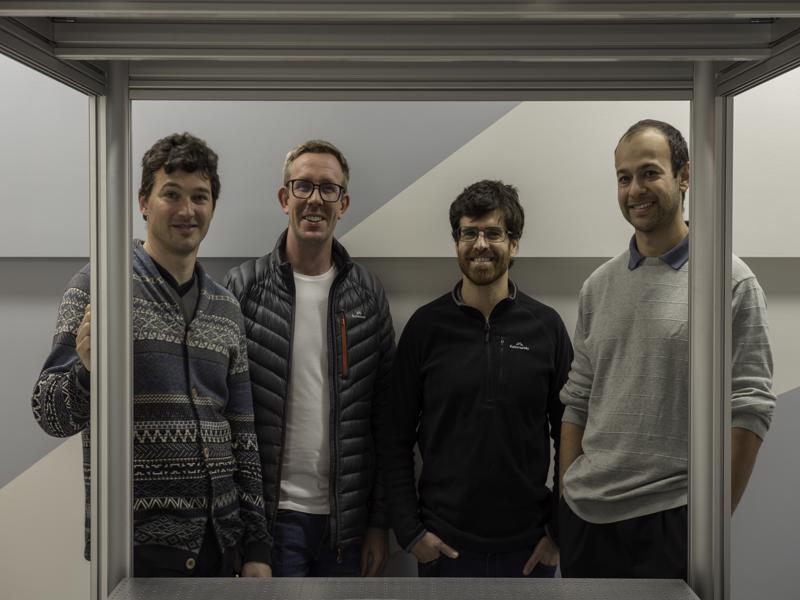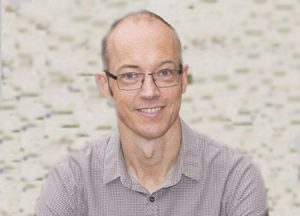Inbox and Environment News: Issue 377
September 23 - 29, 2018: Issue 377
Pittwater Environment Notes: Issue 377
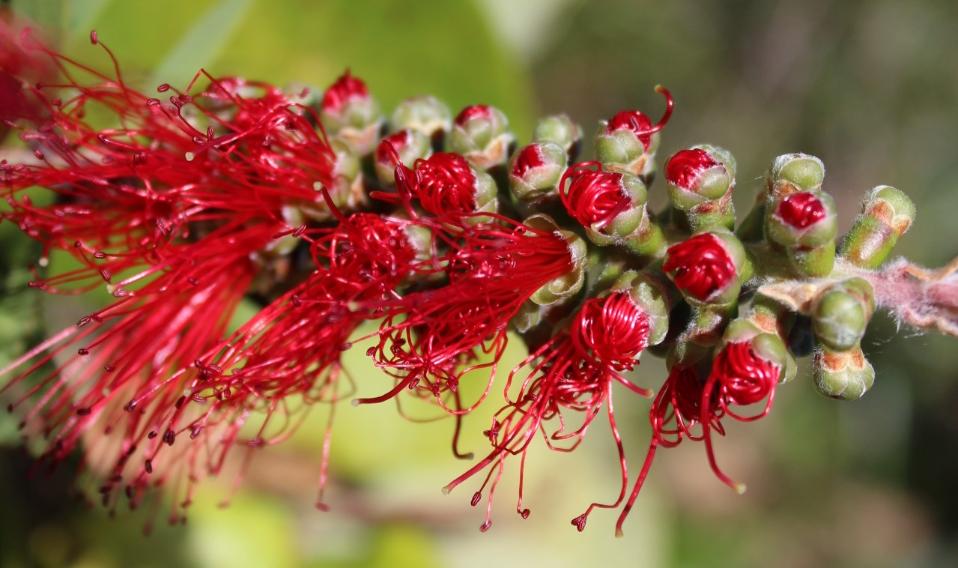
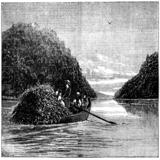 A Bunch Of Wildflowers: Historical Spring September Songs At this time of year many are taking the opportunity to visit the bush reserves we live among just to see the flowering with every shade and colour of local and ancient flora. Although we celebrate what remains there is also a lament that has echoed for a few generations about what has been lost by the encroachment of suburban developments or the careless profit-first policies of governments until this era when forests and their trees has now become a state of so few 'that a child may write (count) them'.
A Bunch Of Wildflowers: Historical Spring September Songs At this time of year many are taking the opportunity to visit the bush reserves we live among just to see the flowering with every shade and colour of local and ancient flora. Although we celebrate what remains there is also a lament that has echoed for a few generations about what has been lost by the encroachment of suburban developments or the careless profit-first policies of governments until this era when forests and their trees has now become a state of so few 'that a child may write (count) them'.
Throughout the gathering of threads for history subjects insights of how much the whole peninsula bloomed with every variety of native flower, and even recent and current adjustments to ensure the survival of those now threatened, as in the case of Grevillea cayli or the Angus's Onion Orchid, have allowed insights into what those who came before us saw and how we lost so much so soon.
Ignorance of how these plants grow, access through the advent of motor vehicles, cases where flowers combined with their plants' roots were ripped out en masse, sometimes simply to prevent other flowers sellers at markets profiting, mingled with arrogance and a belief that the supply was endless and would regrow for the next seasons' 'pluckings' even while its specific terrain shrank, has defined a limited amount of areas where people may stand surrounded by a carpet of pink, yellow, red and purple now.
And that's before we begin to count how many boatloads of 'excursionists', who came into the Pittwater estuary in their thousands from the 1880's on, all reportedly taking home 'armfuls' of gathered ferns and flowers. They too cleaned out whole places of their original gardens.
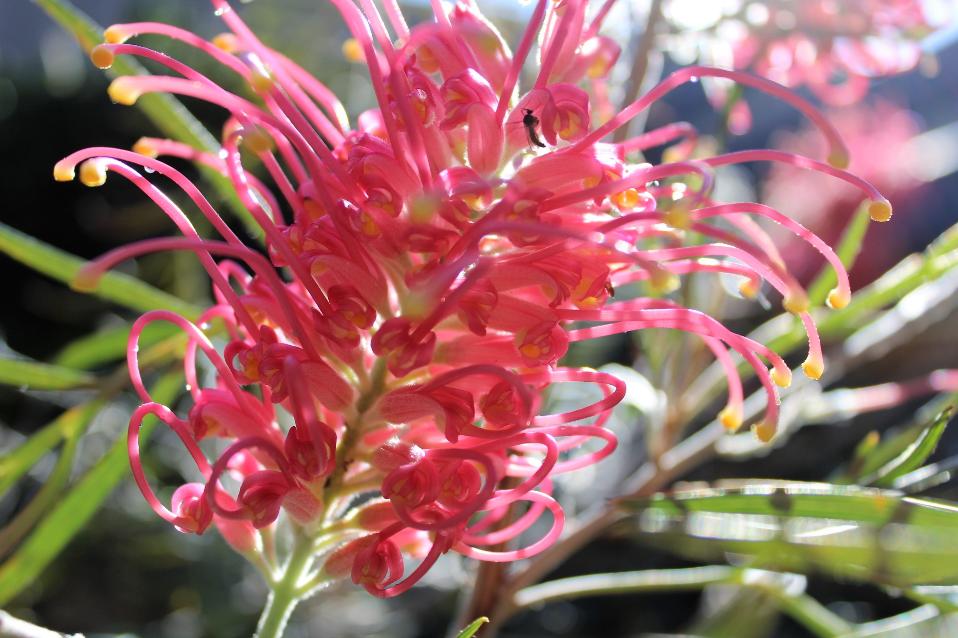

 A Bunch Of Wildflowers: Historical Spring September Songs
A Bunch Of Wildflowers: Historical Spring September Songs Throughout the gathering of threads for history subjects insights of how much the whole peninsula bloomed with every variety of native flower, and even recent and current adjustments to ensure the survival of those now threatened, as in the case of Grevillea cayli or the Angus's Onion Orchid, have allowed insights into what those who came before us saw and how we lost so much so soon.
Ignorance of how these plants grow, access through the advent of motor vehicles, cases where flowers combined with their plants' roots were ripped out en masse, sometimes simply to prevent other flowers sellers at markets profiting, mingled with arrogance and a belief that the supply was endless and would regrow for the next seasons' 'pluckings' even while its specific terrain shrank, has defined a limited amount of areas where people may stand surrounded by a carpet of pink, yellow, red and purple now.
And that's before we begin to count how many boatloads of 'excursionists', who came into the Pittwater estuary in their thousands from the 1880's on, all reportedly taking home 'armfuls' of gathered ferns and flowers. They too cleaned out whole places of their original gardens.

Fishing Lockouts Off The Table
Monday, 17 September 2018 : Media Release - Niall Blair, Minister for Primary Industries, Minister for Regional Water, Minister for Trade and IndustryThe NSW Government has today committed that there will be no loss of fishing rights or access under the proposed marine park sites put forward by the NSW Marine Estate Management Authority (MEMA).
Minister for Primary Industries, Niall Blair said he has received extensive feedback from both local communities and anglers and is confident that fishing is not the key threat to the sustainability of our marine environment.
“The feedback we have received has been robust but vital to being able to make this decision today. While consultation will continue, I felt it was paramount to allay the uncertainty and fear the fishing industry is currently experiencing,” Mr Blair said.
“I am a keen fisherman myself and understand both the economic and social values the industry brings to our State.
“MEMA put forward this proposal because they had identified 25 areas that require better management to ensure their sustainability.“What is now clear is that their proposed management methods and in some cases the sizes of the sites, offered up a narrow option that unfairly impacted on low risk activities, such as fishing and spear-fishing.
“As a result the NSW Government has taken lockouts off the table. We are confident there are many other ways to manage these sensitive areas, that have fishers as part of the solution and we will continue to explore these options for the rest of the consultation period.
“Today’s decision does not change the fact we are still working towards a marine park that protects key marine habitats, species and the environment we all know and love.
“In order to manage them and protect them for future generations we need an approach that is accepted and sustainable for the people of NSW. I encourage everyone to continue to have their say as we work to deliver a final marine park solution in the coming weeks.
“In 2011, we made an election commitment to deliver a marine park strategy that was based on risk assessments and consultation rather than empty ideology and slogans that we saw under Labor. We remain committed to that promise and will continue to do the hard work to make sure we get an outcome that is sustainable now and well into the future.”
Consultation on the proposal closes on the 27th September. To have your say here: https://www.marine.nsw.gov.au/
Protections Stripped From Sydney Marine Park Before Consultation Period Ends
September 17, 2018: Media Release - Nature Conservation Council and Australian Marine Conservation SocietyConservation groups have condemned the NSW Government’s unilateral decision to strip environmental protections from its proposed Sydney Marine Park before the public consultation period has closed.
“This decision undermines public confidence in the government’s consultation process, which still has 10 days to run,” Nature Conservation Council CEO Kate Smolski said.
“By caving into a noisy minority of voices and pre-empting the results of the public consultation, the government has denied thousands of people a say in the protection of our precious marine life.
“It is a slap in the face for the vast majority of people who say they want increased protections for our ocean waters and marine life.“This is a betrayal of public trust that may cost the Berejiklian government dearly at the next election as people on the coast oppose scrapping the sanctuary areas.
“Polling last month showed that if the government backflipped on Sydney Marine Park many people in key coastal electorates would vote against the Coalition.”
Australian Marine Conservation Society spokesperson Adele Pedder said: “It's great that the importance of marine parks has been recognised, but the science shows stripping sanctuary protections may render the park potentially ineffective.
“The people of Sydney will continue to stand up for their blue backyard until we have sanctuaries for our marine life.”
The poll found public support for a marine park was very high in key coastal electorates: 83% in Manly, 76% in Coogee, and about 75% in the Central Coast seats of Gosford and Terrigal.
The poll also found people in those electorates would be more likely to vote for candidates and parties who supported increasing marine protections and punish the government if it backflipped on its marine park proposal.
ABOUT MARINE PARKSNSW marine parks are multiple-use and allow a range of activities including recreational fishing, commercial fishing, boating, diving, snorkeling and swimming across the region. The activities allowed are determined by zoning arrangements developed through community consultation.
When the marine park for the Sydney region is fully established, NSW will have seven coastal and offshore marine parks. The others include Cape Byron, Solitary Islands, Port Stephens, Jervis Bay, Batemans and Lord Howe.https://www.nature.org.au/media-releases/2018/09/public-support-for-sydney-marine-park-soars-to-90/
Moderate Warming Could Melt East Antarctic Ice Sheet
September 19, 2018: University of QueenslandParts of the world's largest ice sheet would melt if Antarctic warming of just 2°C is sustained for millennia, according to international research.
University of Queensland scientist Dr Kevin Welsh was part of a team that used evidence from warm periods in Earth's history to see how the East Antarctic Ice Sheet might react to a warming climate.
Dr Welsh said marine sediment layers indicated the ice sheet had retreated during warming in the late Pleistocene period, when temperatures were like those predicted for this century.
"Antarctica is around twice the size of Australia, with ice sheets several kilometres thick and containing around half of the world's fresh water," he said.
"The East Antarctic Ice Sheet covers about two thirds of the area, and because its base is largely above sea level it was generally thought to be less sensitive to warming climates than the adjacent West Antarctic Ice Sheet.
"However, some areas -- like the Wilkes Land Subglacial Basin, directly south of Australia -- are below sea level and contain enough ice to raise global sea levels by several metres.
"The evidence we have suggests that with the predicted 2°C warming in Antarctica -- if sustained over a couple of millennia -- the sheet would start melting in these locations."
Dr Welsh, from UQ's School of Earth and Environmental Sciences, said the team chemically analysed layers of sediment deposited on the Southern Ocean floor by glaciers.
"We found that the most extreme changes in the ice sheet occurred during two interglacial periods 125,000 and 400,000 years ago, when global sea levels were several metres higher than they are today," he said.
"These periods could be analogues for future climates and it seems likely that ice loss from the East Antarctic Ice Sheet contributed to those higher sea levels.
"Ice loss contributes to rising global sea levels which are a threat to many coastal communities, and making projections requires a solid understanding of how sensitive these ice sheets are."
Imperial College London researcher Dr David Wilson said the findings were extremely concerning for humanity.
"With current global temperatures already one degree higher than during pre-industrial times, future ice loss seems inevitable if we fail to reduce carbon emissions," Dr Wilson said.
David J. Wilson, Rachel A. Bertram, Emma F. Needham, Tina van de Flierdt, Kevin J. Welsh, Robert M. McKay, Anannya Mazumder, Christina R. Riesselman, Francisco J. Jimenez-Espejo, Carlota Escutia. Ice loss from the East Antarctic Ice Sheet during late Pleistocene interglacials. Nature, 2018; 561 (7723): 383 DOI: 10.1038/s41586-018-0501-8
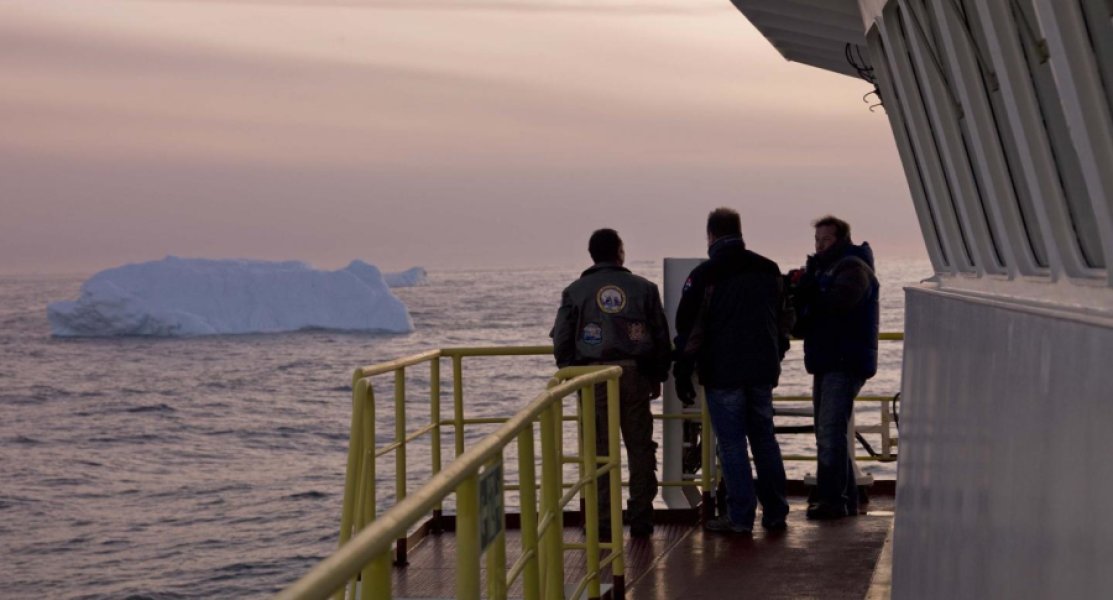
These are researchers at dusk on the research vessel JOIDES Resolution, on expedition to Antarctica. Credit: IODP Imaging Office

Green Space Near Home During Childhood Linked To Fewer Respiratory Problems In Adulthood
September 18, 2018Children who have access to green spaces close to their homes have fewer respiratory problems, such as asthma and wheezing, in adulthood, according to new research presented today (Wednesday) at the European Respiratory Society International Congress [1]. In contrast, children who are exposed to air pollution are more likely to experience respiratory problems as young adults.
Until now, little has been known about the association between exposure to air pollution as a child and long-term respiratory problems in adulthood. RHINESSA [2] is a large international study that has been investigating lung health in children and adults in seven European countries, and that has information on residential "greenness" and air pollution exposures from birth onwards from several study centres. In a new analysis, Dr Ingrid Nordeide Kuiper (MD), from the Department of Occupational Medicine at Haukeland University Hospital, Norway, and colleagues analysed greenness data from 5415 participants aged between 18 and 52 years, contributed by RHINESSA centres in Tartu (Estonia), Reykjavik (Iceland), Uppsala, Gothenburg, Umea (Sweden) and Bergen (Norway); they also analysed air pollution data from 4414 participants, contributed from centres in Uppsala, Gothenburg, Umea and Bergen.
They looked at how many people suffered from more than three respiratory symptoms, severe wheeze (in which the person experienced wheezing with breathlessness in the past year but did not have a cold), and late onset asthma (asthma that started after the age of 10 years). Respiratory symptoms included: chest wheezing or whistling; breathlessness when wheezing; wheezing or whistling without a cold; a tight chest on waking; being woken by an attack of shortness of breath; being woken by a cough; asthma attack; and taking asthma medicine.
The researchers calculated average annual exposure to three air pollutants: two sizes of fine particulate matter (PM2.5 and PM10) and nitrogen dioxide (NO2) [3] from a child's birth until age 18. They also calculated annual average exposure to "greenness" in a 100-metre zone around the home address for the same period; "greenness" is assessed by means of a Normalised Difference Vegetation Index (NDVI), which uses satellite images to quantify the amount of vegetation in an area.
A total of 608 participants (12%) had more than three respiratory symptoms, 384 (7.7%) had severe wheeze and 444 (9.4%) had late onset asthma.
"These are preliminary results," said Dr Kuiper, "but we found that exposure to greenness during childhood was associated with fewer respiratory symptoms in adulthood, while exposure to air pollutants in childhood was associated with more respiratory symptoms in adulthood and with late onset asthma."
Examples of findings from the different centres that contributed data for the analysis showed that, in Bergen, exposure to PM2.5 and NO2 increased the probability of late onset asthma by 6-22%; exposure to PM10 increased the probability of developing respiratory symptoms by 21% in Uppsala and by 23% in Bergen; exposure to greenness before the age of ten was associated with a 71% lower probability of wheeze in Tartu, and exposure to greenness between the ages of 11 and 18 was associated with a 29% lower probability of respiratory symptoms and a 39% lower probability of wheeze in Tartu.
"We need to analyse these findings further before drawing any definite conclusions. However, it is likely that our findings will substantially expand our knowledge on the long-term effects of air pollution and greenness, enabling physicians, scientists and policy-makers to see the importance of exposure to pollution and access to green spaces, and helping to improve public health," said Dr Kuiper. "We will be conducting further analyses that include more centres that are taking part in the RHINESSA study, and we also want to expand analyses to look at the effects of exposure to air pollution and greenness across generations."
She concluded: "We believe that our results, seen together with previous results, will be of particular value for city planners and policy-makers; with increasing population density in the years to come it will be vital to include a decrease in air pollution exposures and an increase in access to green spaces in future city plans and societal regulations."
Professor Mina Gaga is President of the European Respiratory Society, and Medical Director and Head of the Respiratory Department of Athens Chest Hospital, Greece, and was not involved in the study. She said: "This is a fascinating study which underlines the importance for children's short- and long-term health of having plenty of green space in residential areas. The ongoing work of the RHINESSA study will, no doubt, produce more interesting and useful results to support these early indications. From a clinical point of view, access to green spaces is something that doctors may want to enquire about when they see patients with respiratory problems. They could, for instance, advise their patients about trying to avoid polluted areas and tell them about how green spaces might be able to counter some of the negative effects of pollution."
Notes:[1] Abstract no: OA5185, "Lung health in adulthood after childhood exposure to air pollution and greenness," by I. Kuiper et al; oral presentation in "Effect of environmental exposure on lung function outcomes" session, 08.30-10.30 hrs CEST, Wednesday 19 September, Room 7.3M.
[2] RHINESSA stands for Respiratory Health in Northern Europe, Spain and Australia.
[3] PM10 and PM2.5 are atmospheric particulate matter (PM) that have a diameter of less than 10 or 2.5 micrometres respectively. PM2.5 is about 3% of the diameter of a human hair. Sources of PM10 include dust other emissions from industry, vehicle emissions and rubber tyre abrasions. Sources of PM2.5 include power plants, motor vehicles (internal combustion engines), airplanes, residential wood burning, forest fires, agricultural burning, volcanic eruptions and dust storms. Sources of NO2 include internal combustion engines and burning fossil fuels such as coal.
Materials provided by European Lung Foundation.
Bitou Bushspraying Demo With Helicopter Drone At Long Reef
PittwaterEcowarriors: Published on Sep 20, 2018
When equipped with a lance this machine should be capable of treating bitou bush and boneseed weeds on headland cliffs that are otherwise impossible to reach. This is expected to be cost effective compared with abseiling and safero, with zero impact on fragile shale cliffs.
The lance can precisely deliver a minimal jet of herbicide (rather than a broad spray that can drift), an important consideration when the aim is to preserve all native species.
Visit:
Council Shows Weedos Leading Weed Control Technology On The Northern Beaches by Northern Beaches Council
PittwaterEcowarriors: Published on Sep 20, 2018
When equipped with a lance this machine should be capable of treating bitou bush and boneseed weeds on headland cliffs that are otherwise impossible to reach. This is expected to be cost effective compared with abseiling and safero, with zero impact on fragile shale cliffs.
The lance can precisely deliver a minimal jet of herbicide (rather than a broad spray that can drift), an important consideration when the aim is to preserve all native species.
Visit:
Council Shows Weedos Leading Weed Control Technology On The Northern Beaches by Northern Beaches Council
Katandra Season 2018
Open Days at Katandra Bushland Sanctuary are open again. Visit Katandra's Profile for more details and pop up and visit.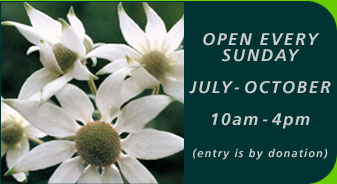

Aussie Backyard Bird Count: 22-28 October 2018
Save the date — the Aussie Backyard Bird Count is back from 22-28 October 2018.
The #AussieBirdCount is a great way to connect with the birds in your backyard, no matter where your backyard might be — a suburban backyard, a local park, a patch of forest, a farm, down by the beach, or the main street of town.
To take part all you need is 20 minutes and your favourite outdoor space. Not only will you be contributing to BirdLife Australia's knowledge of Aussie birds, but there are also some great prizes on offer. Head to the website and register as a Counter today! If you’ve taken part before and are registered for this year why not introduce someone else to the wonderful world of birding through this easy, fun, all-ages event? And if you're a teacher, check out our Bird Count curriculum-based lesson plans to get your students (or the whole school!) involved.
If you have questions about the Aussie Backyard Bird Count, please head to our FAQ page, where you’ll find more information about registering, participating, and troubleshooting.
28 days to go — and counting!


Nature Writing Prize 2019
Calling all nature writers!The Nature Conservancy Australia is delighted to open the fifth biennial Nature Writing Prize.
The winner of the best essay (3,000 – 5,000 words) in the genre of ‘Writing of Place’ will receive a $5,000 award and will be published as an online multimedia essay by Griffith Review – Australia’s leading literary quarterly publication.
The prize will go to an Australian writer whose entry is judged to be of the highest literary merit and which best explores their relationship and interaction with some aspect of the Australian landscape.
Entry costs $30.00. The deadline for submissions is 1 February 2019 and the winner will be announced in May 2019. The prize is open to Australian citizens and permanent residents.
Special Deal For Adani To Take 12.5 Billion Litres Of River Water Without Assessment
September 18, 2018: by Lock the GateLock the Gate says a decision by the Federal Environment Minister yesterday to allow Adani to take 12.5 billion litres of river water without any assessment of its water impacts is an appalling and dangerous move at a time of severe drought.
The Minister has made a decision not to apply the water trigger under federal environment laws to Adani’s North Galilee Water Scheme project, despite it planning to take 12.5 billion litres of water each year and pipe it 110km to run the Carmichael coal mine.
Furthermore, whilst acknowledging the risks of the project to threatened species, the Minister is not requiring a full Environment Impact Assessment of the impacts, but is allowing Adani to conduct an inadequate review based on existing information.
“This is another special deal for Adani that puts our water resources at risk during a terrible drought and hangs Queensland graziers and communities out to dry,” said Carmel Flint, spokesperson for Lock the Gate Alliance.
“The Minister has ignored the federal water trigger which exists specifically to address the impacts of mining on our precious water resources.
“We have no doubt this has been rushed through to enable Adani to push ahead with its mine, even though we simply don’t know what the impacts on our river systems will be.
“In the past, water pipelines a tiny fraction the size of the Adani pipeline have been forced to conduct full environmental impact assessments, so letting Adani off without doing the research needed is an absolute disgrace,” Ms Flint said.
Central Queensland grazier Bruce Currie said “This decision is a slap in the face to our communities after allegations just last week that Adani has illegally drilled dewatering bores.
“Adani should not be getting fast-tracked by the Federal Minister while there is a huge legal cloud hanging over their conduct.
“We have consistently said that the coal mining industry should not be allowed to put agricultural businesses under threat and destroy regional towns and communities.
“The combined impacts of the Adani mine on groundwater and now river water poses a massive risk to our region.
“Water is the basis of life, and risking it all for a declining dirty industry that has no future makes no sense at all” he said.
NT Water Act Amendment To Give Fracking Companies Free Pass To Pollute Water
September 19, 2018Mining and fracking companies could be given an exemption allowing them to pollute water across entire exploration permit areas in the Northern Territory if draft changes to the NT Water Act are not rewritten to remove significant loopholes.
Submissions to the Water Legislation Amendment Bill 2018 are due today. The Lock the Gate Alliance will submit that the exemption drafted under Section 7(2) puts Northern Territory water at risk and is completely unacceptable.
“This proposed exemption to allow miners and fracking companies to pollute NT water across their operations is a breach of trust by the Gunner Government,” said Naomi Hogan, National Coordinator with the Lock the Gate Alliance.
“There is no logical reason why Water Act should include this broad water pollution permission that could result in companies avoiding penalties for spills of chemicals, or mine and fracking waste water contaminating our waterways. It’s unacceptable.
“As drafted, fracking companies may not be breaking the law if they pollute creeks, dams and groundwater across their vast fracking licences which cover cattle stations, iconic tourism spots and community living areas.
“Fracking companies use poisonous chemicals in order to extract shale oil and gas. Territory communities will be put at risk if this industry gets a free pass on basic laws to prevent water pollution.
“This is the first new law being introduced since the Fracking Inquiry report and already the promises of strict environmental controls on the industry are being compromised.
“The NT Fracking Inquiry found that Territorians are overwhelmingly opposed to fracking. This drafted exemption to allow fracking companies to pollute water is a slap in the face to community members that have serious concerns about protecting water from this industry.
“This exemption allows the fracking industry to gamble with the safety of our water supplies. Its time the Gunner Government put Territorians first and removed the free pass to pollute under Section 7(2).
“We are calling on the Economic Committee reviewing this Bill to remove this exemption and ensure there is no broad right for miners and fracking companies to pollute Territory water,” she said.
The Lock the Gate Alliance will also submit that the draft updates to the Water Act are still missing critical new reforms recommended in the Fracking Inquiry.
“The reform process for new water laws is piecemeal and shambolic. These proposed reforms are yet to provide a clear water protection framework as recommended by the NT Fracking Inquiry.”
Further information:
The Committee site with the draft changes and call for submissions is here: https://parliament.nt.gov.au/committees/EPSC/60-2018
The part of the NT Water Act in question:
Section 16 of the Water Act presently make it an offence to allow waste to come into contact with water or to pollute it in a way that causes serious environmental harm without authorisation. Water means “water flowing or contained in a waterway”, “ground water” and “tidal water.”
However, the Water Act as drafted for comment includes this section:
Section 7 amended (Application of Act to mining or petroleum activity)
7 (2) Section 16 does not apply to waste that comes into contact with water, or water that is polluted, if:
(a) the contact or pollution occurs in the course of carrying out a mining activity or petroleum activity; and
(b) the waste or polluted water is confined within the mining site or petroleum site on which the activity is being carried out.
Thank You For Paving The Way For An Australian Icon
The University of Sydney: Published on 18 Sep 2018On 18 September the University of Sydney community came together for our fifth 24-hour fundraising challenge, Pave the Way.
Our students, staff, alumni and friends gave to support an Australian icon who really needs our help – the koala. Thanks to the generosity of our community, we are able to extend our world-first research into koala hydration and install more drinking stations to provide them with safe access to the water they so desperately need to survive.
Postdoctoral Research Associate Dr Valentina Mella, the lead on the koala hydration project, provides her own summary of this momentous day.
Find out more: sydney.edu.au/pavetheway
Nominate Your Unsung Local ‘Eco-Hero’
Do you know someone who deserves acknowledgement for their outstanding environmental and conservation achievements to protect the Northern Beaches unique natural environment?
Northern Beaches Council is seeking nominations of community members who have volunteered their time and effort to enhance the region’s diverse and valuable, natural habitat.
The Northern Beaches Eco Awards (formerly the Manly Environment Centre Eco Awards) are now in their 13th year and are open to anyone over 18 years of age. People can be nominated in the following categories: Bushland, Oceans, Waterways and Biodiversity.
Northern Beaches Mayor Michael Regan encouraged the community to get involved.
“Anyone who is doing exceptional work to preserve the natural environment deserves recognition, so we would like to receive their nomination.”
Last year’s Eco Award was won by Belinda Elworthy from Plastic Free Northern Beaches who worked hard to raise awareness about the impact of plastic pollution on the marine environment.This year’s winner will receive an original artwork as well as public recognition for their work and achievements.
Previous winners include Midnight Oil front man and former federal parliamentarian Peter Garrett, Northern Beaches Surfrider Foundation president, Brendan Donohue, and Angelika Treichler, who was the force behind the “Penguin Wardens”, a group she formed to protect Manly’s Little Penquins.
In 2017, a record 34 nominations were received for this prestigious community focussed award.
Nomination forms are available on Council’s website. The deadline for applications is 5pm, Monday 1 October.
Scourges Of The Bush: Fire Risk And Salt Waste In Agency Submissions To Santos’ Narrabri Coal Seam Gas Project
September 18, 2018The Rural Fire Service and the Environmental Protection Agency have raised serious concerns about Santos’ controversial coal seam gasfield at Narrabri, validating community fears that the gasfield will bring two of the worst scourges of the bush - salt and fire.
Eleven agencies have provided feedback so far on Santos’ “Response to Submissions” criticising the company for its continued failure to address holes and problems with the original Environmental Impact Statement.
Notably, the RFS has warned of the risk that a gasfield in the bushfire prone Pilliga forest could create. The coal seam itself may ignite, the agency warns, and gas extraction and infrastructure can also ‘increase the risk of a forest fire spreading and increase the level of danger to firefighters’.
The EPA highlighted Santos’ failure to provide any information about what will happen to hundreds of thousands of tonnes of salt waste that is likely to contain heavy metals and other contaminants.
Narrabri farmer Sally Hunter said, “The responses from these agencies expose serious fire and pollution risks of the proposed Narrabri gasfield and vindicate the fears the community has been raising.
“During peak production Santos will produce up 80 kilograms a minute of toxic salts and they have never been able to explain what they will do with all that stuff.
“We are quite relieved to learn that the EPA is demanding Santos provide answers about the fate of hundreds of thousands of tonnes of contaminated salt waste, before a decision is made about the gasfield.
Willala farmer Alistair Donaldson, who has fought bushfires in the Pilliga said, “We’ve been saying from the start that the flammable Pilliga is the wrong place for a gasfield and the thought of fighting fires in the forest alongside gas wells, pipelines and flares is a big worry.
“The more industrial activities we have out there in the forest, the more chance of ignition of bushfires and it is a potential death-trap. Santos’ gasfield will put rural volunteer firefighters and gas workers at risk and the company hasn’t even had the decency to answer the questions raised by the RFS.”
Lock the Gate Alliance spokesperson Georgina Woods said, “Narrabri Council has pointed out that it’s not just Santos who have been found wanting - the NSW Government has failed to deliver a major recommendation from the NSW Chief Scientists review.
The NSW Government hasn’t delivered the three-tiered insurance regime Professor O’Kane said was necessary to manage the risks and impacts of coal seam gas. Without that, how can the Government even complemplate letting this gasfield proceed?
“Salt and fire are scourges of the bush. As far as we’re concerned, CSG is not needed or wanted in North West New South Wales, and is certainly far too risky to undertake, uninsured, in the flammable Pilliga forest and across a recharge aquifer of the Great Artesian Basin,” she said.
Come And Hide At Gwydir Wetlands New Bird Watching Platform
September 18, 2018: Nsw Office of Environment & HeritageThe Gwydir Wetlands State Conservation Area (SCA), near Moree, will be open to the public from 1 October to 14 November as bird life returns to this internationally recognised wetland.National Parks and Wildlife Service (NPWS) Area Manager, Marty Linehan, said Waterbird Lagoon, part of the Gwydir Wetlands SCA is opening to the public on October 1.“There is a new bird hide on site, providing an ideal vantage point for bird watchers,” Mr Linehan said.
“In times of drought the wetlands are important refuge areas for wildlife. Everyone is encouraged to take the opportunity to visit the wetlands.
“You can either stay dry in the bird hide, bring a kayak, or come prepared to wade in the lagoon.
“Since records began in the 1920s at least 75 waterbird species have been recorded in the Gwydir Wetlands including colonies of straw-necked ibis, intermediate egrets, glossy ibis and nankeen night-herons, said Mr Linehan.
The Gwydir Wetlands lies on the Gwydir River floodplain 60 km west of Moree. Part of it is now under public management as the Gwydir Wetlands State Conservation Area.
Access is available from daylight to dusk during dry weather. No overnight camping is permitted on the State Conservation Area, however there are facilities close by at a local property called ‘Boyanga South’.
There are also some remote cameras located on ‘Waterbird lagoon’ which people can check the wetland remotely at rmCam. The username is Gwydir Waterbirds and password 1234.
For current road and water level conditions please contact either the Moree Visitor Information Centre 02 6757 3350, Narrabri National Parks and Wildlife Service office 02 6792 7300, or ‘Boyanga South’ 02 6753 3252.
For more information on the Gwydir Wetlands State Conservation Area visit National Parks: Gwydir Wetlands State Conservation Area
Koalas In NSW Are Losing Their Homes
They’re losing their homes to excessive tree-clearing and if we don’t act soon, koalas could be extinct in NSW as early as 2050. Due to weakened laws, tree-clearing has tripled in the past two years, resulting in the destruction of the homes of more than 240 native species.
Sign the petition: https://wwfau.org/2NUAaLP
IWC 2018
The IWC Plenary closes with acknowledgement of difficult differences and commitment to mutual respect
The final day of the Plenary began with thanks to the Government of Kenya, hosts of the next meeting of the IWC Scientific Committee in Spring 2019.
The Commission resumed discussions on the Government of Japan's Way Forward package of proposals on the future direction of the IWC. A revised version of the proposal had been circulated for consideration overnight. Consensus could not be reached and a vote was requested by the proponents. The package of proposals included an amendment to the legally binding Schedule of the Commission and therefore required a three quarters majority. The result of the vote was 27 in support, 41 against and 2 abstentions and so the proposals were not adopted. The difficult differences between the positions of some governments were acknowledged and the importance of respect for all positions underlined.
The Government of Slovenia offered to host the next meeting of the Commission in 2020. Having hosted both the Commission and the Scientific Committee meetings in recent years, the Government of Slovenia explained that, whilst not wanting to deprive any other countries of the opportunity to host, in the absence of other offers they were seeking to ensure that a host was identified by the end of this meeting. The Government of Slovenia was thanked for its generosity to the Commission once again.
Officers of the Commission were elected and it was confirmed that current Vice Chair, Andrej Bibic of Slovenia, would take the role of Chair, and Amadou Diallo of Guinea would take the role of Vice Chair. These roles are undertaken for a two year period, until the end of the next Commission meeting in 2020.
The Chair highlighted that the full Chair's Report, recording the discussions and decisions of the meeting, would be available in two months time.
The Government of Brazil was thanked for their efficient hosting and warm hospitality in Florianopolis.
Entries Open For 2018 NSW Farmers Of The Year Award
July 2018: NSW DPINSW Minister for Primary Industries and outgoing NSW Farmers President Derek Schoen have announced applications for the prestigious NSW Farmer of the Year award have opened for 2018.
Speaking at the NSW Farmers Annual Conference today, Minister Blair said the award is both a celebration and recognition of farming excellence through the diverse range of enterprises across NSW.
“Our farmers represent some of the most innovative, industrious primary producers in the country and produce some of the highest quality food and fibre to be found anywhere in the world,” Minister Blair said.
“The state’s $15 billion primary industries sector is going from strength to strength under the stewardship of our farmers, who demonstrate drive and determination to run efficient, profitable and sustainable businesses.”
Mr Schoen has served as a judge of the award throughout his Presidency and said the 2017 finalists represented the breadth of NSW’s farming sector.
“From biodynamic, organic egg farming to a commercial cropping enterprise gaining efficiencies through environmental practices, from young guns through to farmers who have had a life-long commitment to farming excellence, the calibre of applications to the NSW Farmer of the Year award continues to be hugely impressive,” he said.
“The award helps identify outstanding farmers who are pushing the boundaries within their industry and in farming generally, and recognises people with outstanding management skills who demonstrate a combination of innovation, profitability, sustainability and community involvement.
“I strongly encourage all farmers in the primary industries sector to enter to become the 2018 NSW Farmer of the Year.”
The successful 2018 Farmer of the Year will be awarded $10,000, and finalists will receive $2,000.
The award is an initiative of the NSW Department of Primary Industries and NSW Farmers, with support from SafeWork NSW and Fairfax Agricultural Media.
The application process is now online, where you can both apply and nominate a farmer by visiting www.nswfarmeroftheyear.com.auwith entries closing 26 September 2018.
Announcement Of Royal Commission Into Aged Care Quality And Safety
September 18, 2018: Australian Government Dept. of HealthOn Sunday 16 September Prime Minister Scott Morrison announced the Government's decision to ask the Governor General to establish a Royal Commission into the aged care sector.
The Royal Commission will primarily look at the quality of care provided in residential and home aged care to senior Australians. It will also include young Australians with disabilities living in residential aged care settings.
The Government is seeking your feedback to develop the detailed Terms of Reference of the Royal Commission. Comments are open to members of the community, including residents and their families and aged care providers and aged care workers. Consultation is open until Tuesday 25 September.
It is anticipated it will cover:- The quality of care provided to older Australians, and the extent of substandard care;
- The challenge of providing care to Australians with disabilities living in residential aged care, particularly younger people with disabilities;
- The challenge of supporting the increasing number of Australians suffering dementia and addressing their care needs as they age;
- The future challenges and opportunities for delivering aged care services in the context of changing demographics, including in remote, rural and regional Australia;
- And other matters that the Royal Commission considers necessary.
- The quality of care provided to older Australians, and the extent of substandard care;
- The challenge of providing care to Australians with disabilities living in residential aged care, particularly younger people with disabilities;
- The challenge of supporting the increasing number of Australians suffering dementia and addressing their care needs as they age;
- The future challenges and opportunities for delivering aged care services in the context of changing demographics, including in remote, rural and regional Australia;
- And other matters that the Royal Commission considers necessary.
Royal Commission Into Aged Care Quality And Safety
September 16, 2018: Media release - Prime Minister, Minister for Health, Minister for Senior Australians and Aged CareToday, I am announcing the Government’s decision for me to ask the Governor General to establish a Royal Commission into the Aged Care sector.
This Royal Commission will primarily look at the quality of care provided in Residential and Home Aged Care to senior Australians, but also include Young Australians with disabilities living in Residential Aged Care settings.
We are committed to providing older Australians with access to care that supports their dignity and recognises the contribution that they have made to society.
Funding for aged care is at record levels. In 2017-18, alone, aged care spending is estimated to reach $18.6 billion. Over the next five years funding will grow by $5 billion to $23.6 billion.
$1.6 billion has been provided to create an additional 20,000 higher needs home care packages since last December. In excess of $50 million is being provided every year for dementia-specific programs. And in my last budget, a further $5.3 million has been committed over four years to pilot improvements to care for people living with dementia, with an emphasis on use of innovative technologies.
Our aged care sector in Australia provides some of the best care in the world. And we are looked to as a leader in the field. Aged care services and training has become an important service export industry for Australia.
There are thousands of extraordinary operators, facilities, care providers, nursing and other clinical staff, volunteers, cleaners, cooks, therapists out there improving the lives of senior Australians every day. They do it for love and out of a deep professional commitment.
But the best teams will always want to do better, and will always want to be honest about the performance of the sector as a whole. If you care about aged care, which those who work in the sector do, you will want it to be at its very best.
Next week will mark twelve months since South Australia’s Oakden aged care facility was closed.
When the Oakden tragedy was revealed publicly in May 2017, Minister Ken Wyatt commissioned a review into quality across the aged care sector and asked for increased inspection and compliance work.
We have already taken steps to improve the system. In 2017 we commissioned the Review of National Aged Care Quality Regulatory Processes.
We have worked through the 2017 Legislated Review of Aged Care, and responded in the 2018 Budget with the More Choices for a Longer Life package that encouraged active ageing and provided an extra $1.6 billion for home care.
We have legislated for new Aged Care Quality Standards, the first upgrade of standards in 20 years, and introduced a Bill to create the Aged Care Quality and Safety Commission, supported by $106 million to support better facilities, care and standards in aged care.When I became Prime Minister just over three weeks ago, I was advised that as a result of the increased audit work we had commissioned as a Government to deal with this problem, the Department of Health has closed almost one aged care service per month since Oakden, with an increasing number under sanction to improve their care.
Putting in place clear requirements for better standards and providing the resources and powers to police those standards will always shine a light on the problems that exist. That is the whole point. These findings demonstrate the effectiveness of the measures we have been taking.
However, incidences of older people being hurt by failures of care simply cannot be explained or excused. We must be assured about how widespread these cases are. I also want to be assured about the care provided to younger Australians living in the residential aged care facilities.
As a community we expect high standards for the quality and safety of aged care services. Our Government shares these expectations. This Royal Commission will be about proactively determining what we need to do in the future to ensure these expectations can be met.
If you want to deal with a problem, you have to be fair dinkum about understanding the full extent of it. Whether there is a crisis in aged care or not is to be determined. That is the point of holding a Royal Commission. It is not to pre-determine outcomes.
The evidence shows that the problems are not restricted to any one part of the aged care sector, whether it is for profit or not for profit, large or small facilities, regional or major metropolitan. The Royal Commission will look at the sector as a whole, without bias or prejudice. It will make findings on the evidence. As a Government, and a Parliament, it will be our job to act on these findings together.
What matters most is fixing and getting ahead of the problems.We also need to get a better handle on what more needs to be done to prepare the system for the increase in demand that will occur in the next decade as the ‘baby boomer’ generation reaches an age where they will need support from the aged care system.With more Australians exercising their choice to stay at home for longer, this means that when Australians are entering residential aged care these days they are doing so with more acute needs. This will continue to have a big impact on our residential aged care model in the future. We need to get ahead of this.
Despite the further reforms underway, including the coming establishment of a new Aged Care Quality and Safety Commission, there clearly remains areas of concern with regard to the quality and safety of aged care services.
For this reason, our Government has decided to establish a Royal Commission into Australia’s aged care system. I should stress that conducting the Royal Commission will not impact any existing or planned actions to improve the standards and quality of care being provided in aged care facilities. We need to continue to get on with these initiatives.
The Royal Commission will be in addition to, not instead of, the actions we are taking.
Australians must be able to trust that their loved ones will be cared for appropriately and the community should have confidence in the system.
The Terms of Reference will be determined in consultation with the community, including residents and their families and aged care providers. We expect that it will cover:- The quality of care provided to older Australians, and the extent of substandard care;
- The challenge of providing care to Australians with disabilities living in residential aged care, particularly younger people with disabilities;
- The challenge of supporting the increasing number of Australians suffering dementia and addressing their care needs as they age;
- The future challenges and opportunities for delivering aged care services in the context of changing demographics, including in remote, rural and regional Australia;
- Any other matters that the Royal Commission considers necessary.
- The quality of care provided to older Australians, and the extent of substandard care;
- The challenge of providing care to Australians with disabilities living in residential aged care, particularly younger people with disabilities;
- The challenge of supporting the increasing number of Australians suffering dementia and addressing their care needs as they age;
- The future challenges and opportunities for delivering aged care services in the context of changing demographics, including in remote, rural and regional Australia;
- Any other matters that the Royal Commission considers necessary.
Commemorative Stamps Explore Unique Brand Of Aussie Humour
September 18th, 2018 - from Australia PostThis month Australia Post continues its humorous commemorative stamp series, Fair Dinkum Aussie Alphabet, which takes a light-hearted look at Australia through cultural icons, places, characters, flora, fauna and more. In part four of the series, Gavin Ryan illustrates five stamps for the letters E, O, X, Y and Z.
Australia Post Philatelic Manager, Michael Zsolt, said the entertaining stamp series explores the unique brand of Australiana with the previous three releases proving popular with parents, children and stamp collectors alike.
"These stamps take a look at some of Australia's interesting and recognisable features. You'll see in this edition that we include nature, recreation and even fashion to take a snapshot of things that are iconic to our country," Mr Zsolt said.
The stamps feature illustrations from Queensland and Bali-based artist Gavin Ryan. Collectors might recognise Gavin's artistry from parts one, two and three of the Fair Dinkum Aussie Alphabet stamp issues released in 2016 and 2017.
Each stamp design is filled with elements starting with that letter, with the idea is to see how many objects you can name.
The letters featured on the stamps are:
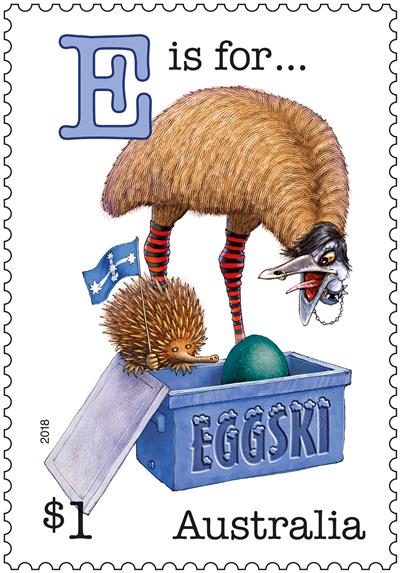
$1 - E is for Emo emu, ear-bashing, echidna and …
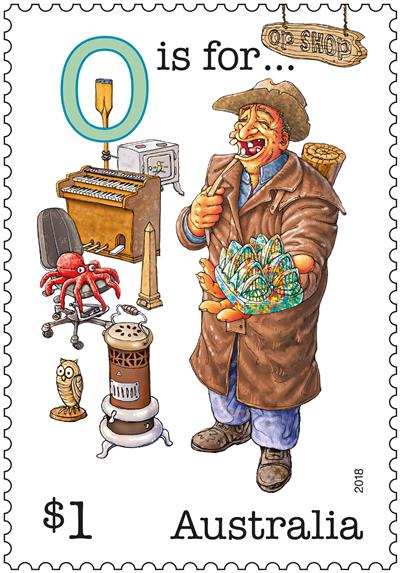
$1- O is for Oilskin, opal, opera house, oar and …
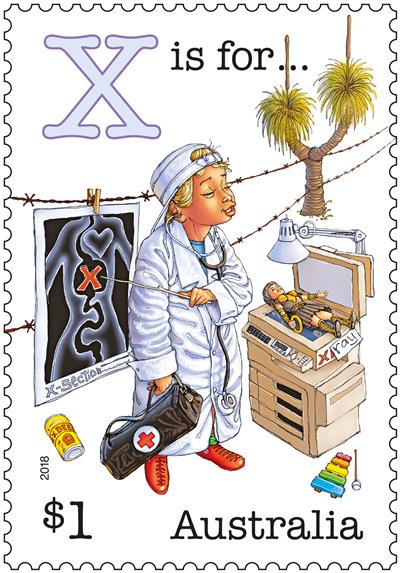
$1- X is for X-ray, Xanthorrhea grass tree, xylophone and …
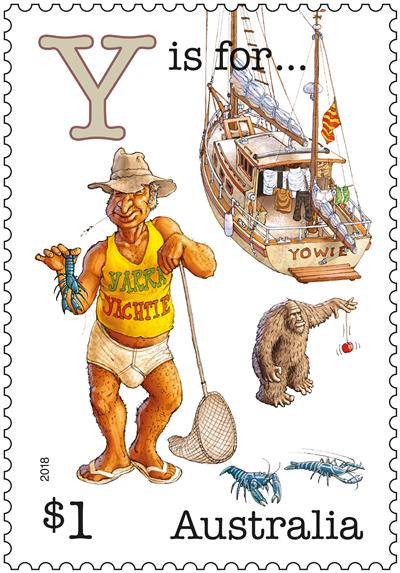
$1 - Y is for Yowie, yabbie, Yarra River and …
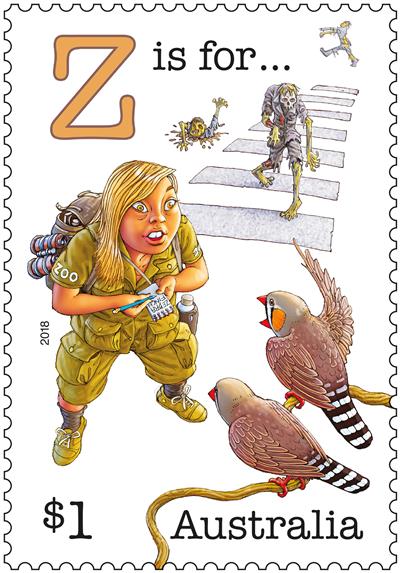
$1 - Z is for Zebra Finch, zoologist, zebra crossing and …
The products available with this stamp issue include a first day cover, stamp pack, maxicards, booklets of 10, and booklet collection. The Fair Dinkum Aussie Alphabet (Part 4) commemorative stamp issue is available from 18 September at participating Post Offices, via mail order on 1800 331 794 and online at auspost.com.au/stamps, while stocks last.





Expeditioners Prepare For Life On The Ice
September 18th, 2018 - from Australian Antarctic DivisionA new batch of Antarctic expeditioners are descending on the Australian Antarctic Division headquarters in Tasmania to prepare for their new life on the ice.
Each year the Division trains about 160 expeditioners before they head to Australia’s Casey, Davis and Mawson research stations in Antarctica or to sub-Antarctic Macquarie Island.
The expeditioners spend between 6 and 18 months down south, undertaking a range of roles from chefs to trades people, weather observers and doctors.
The training in Kingston before they leave, prepares expeditioners for both the technical work they will undertake and the various community activities they’ll need to complete.
It takes up to three months for wintering expeditioners to finish their training and includes search and rescue, wilderness first aid and lay surgical training to assist the station doctor in the event of an emergency.
Expeditioners going to the continent also learn how to use a tracked over snow vehicle, called a Hägglunds.
Last week the mechanics heading into Casey and Davis stations were put through their paces driving the Hägglunds on a nearby farm… strap yourselves in!
Buenos Aires 2018
The Argentinean capital of Buenos Aires will host the third edition of the Summer Youth Olympic Games (YOG) in October, 2018. Athletes between 15-18 years old from 206 countries are set to compete in 32 sports as the stars of tomorrow get their chance to shine on the Olympic stage.
Australia are set to take a team of 88 athletes who will compete across 26 sports. Following on from successful Youth Olympic Games campaigns in Singapore in 2010 (32 medals) and Nanjing in 2014 (26 medals) the Aussie team will be again challenging for the podium. Australia’s previous YOG teams have produced such Olympic heroes as dual Games medallist Jessica Fox, Rio 2016 Olympic Champion Kyle Chalmers and four-time Rio medallist Emma McKeon. Buenos Aires 2018 will no doubt unearth plenty of young guns pushing for Tokyo 2020 and beyond.
The Games will feature four new sports in Sport Climbing and Karate, which are set for their Olympic debut in Tokyo, as well as Break Dancing and Roller Sports. The Games will not only provide a platform for athletes to compete against one another but also provide educational opportunities for the athletes to learn about Olympism and its values.
"Feel the future" is the slogan for Buenos Aires 2018. The slogan highlights the hope that the strict gender equality of this year's edition will inspire a better world through sport and be an example of passion, coexistence and unity in diversity.
The Buenos Aires 2018 Youth Olympic Games vision is “to celebrate the best games BY the youth FOR the youth, FOR the neighborhoods, FOR Buenos Aires, FOR Argentina and FOR the world”.
Among the 76 Young Change-Makers from around the world will be Australian Rio 2016 Modern Pentathlon gold medalist Chloe Esposito. As a Young Change-Maker, Chloe will have the opportunity to mentor the next generation of elite athletes and encourage them to take part in a unique programme of activites and workshops, featuring sessions on injury prevention, anti-doping, careers in sport and media training.
Dual fencing Olympian Evelyn Halls will be the Chef de Mission leading the young Australian team into the Youth Olympic Games.
Visit: www.buenosaires2018.com
Selected AthletesAustralia are set to take a team of 88 athletes aged 15-18 to Buenos Aires 2018 to compete across 26 sports:
ArcheryJason Hurnall (17), Canberra, ACTLaura Paeglis (16), Camberwell, VIC
AthleticsKeegan Bell (17), The Ponds, NSW – 400m Joshua Cowley (17), Brisbane, QLD – Long Jump Jaylah Hancock-Cameron (16), Broulee, NSW – 1500m Jamie Hiscock (17), Chandler, QLD – 2000m Steeplechase Oscar Miers (16), Brisbane, QLD – High Jump Elizabeth Moss (16), Brisbane, QLD – High Jump Keely Small (17), Canberra ACT – 800m Sally Shokry (16), Castle Hill, NSW - Discus Thomas Throssell (17), Perth, WA – 400m Hurdles Rochelle Vidler (17), Collingwood Park, QLD – Hammer Throw Anthony Vlatko (17), Sydney, NSW – 800m Sophie White (16), Perth, WA – 100m Hurdles Luke Young (16), Awaba, NSW – 1500m
BadmintonZecily Fung (16), Sydney, NSW
Basketball 3x3Suzi-Rose Deegan (17), Perth, WAAlexandra Fowler (16), Townsville, QLDRuby Porter (16), Adelaide, SASara-Rose Smith (16), Melbourne, VIC
Beach VolleyballMark Nicolaidis (18), Bardon, QLDJames Takken (18), Bardon, QLDLauren Taylor (16), Moonee Ponds, VICTiaan Smith (17), Algester, QLD
BoxingJai Dennis (16), Brisbane, QLDEmma Lawson (18), Ayr, QLD
Canoe/KayakJenaya Massie (16), Sunshine Coast, QLD
DivingAlysha Koloi (17), Carindale, QLDMatthew Carter (17), Rose Park, SA
EquestrianMadeline Sinderberry (17), Condoblin, NSW
FencingRobert Ciccarelli (16), Mt Vernon, NSWGiorgia Salmas (16), Melbourne, VIC
GolfGrace Kim (17), Greenacre, NSWKarl Vilips (17), Florida, USA
GymnasticsArtistic Kate Sayer (15), Sunnybank, QLDRhythmicLidiia Iakovleva (15), Brisbane, QLDTrampoline GymnasticsLiam Christie (16), Kellyville Ridge, NSWJessica Pickering (17), Belmont North, NSW
Hockey 5'sLain Carr (18), Matcham, NSWJames Collins (18), Perth, WAMiles Davis (17), Sydney NSWBrad Marais (18), Melbourne VICCraig Marais (16), Melbourne, VICAlistair Murray (18), Tincurrin, WAJed Snowden (16), Melbourne, VICChristian Starkie (17), Perth, WABen White (18), Blackburn, VIC
Caitlin Cooper (17), Perth, WANaomi Duncan (16), Sydney, NSWAmy Lawton (16), Emerald, VICMorgan Mathison (18), Gold Coast, QLDIndianna Robertson (18), Bentleigh, VICCourtney Schonell (17), Narellan Vale, NSWJolie Sertorio (16), Peppermint Grove, WAMaddison Smith (18), Albion Park, NSWGrace Young (15), Yowie Bay, NSW
JudoRhys Allan (17), Perth, WASaskia Brothers (15), Castle Hill, NSW
Modern PentathlonNikita Mawhirt (17), Henley Brook, WAKeaan Van Venrooij (18), Parkwood, QLD
Roller Speed SkatingAlexander Myint (16), Bassendean, WAGiselle Stogdale (17), Malvern East, VIC
RowingCormac Kennedy-Leverett (18), Gold Coast, QLDTaylor McCarthy-Smith (18), Brisbane, QLD
SailingMani Bisschops (18), Perth, WAWill Cooley (16), Kensington, NSWEvie Haseldine (15), Ashfield, NSWAlex Halank (16), St Georges Basin, NSWHailey Lea (17), Sunshine Coast, QLD
ShootingOlivia Erickson (15), Greta, NSWAlex Hoberg (16), Adelaide, SAVictoria Rossiter (16), Onkaparinga Hills, SA
Sport ClimbingNed Middlehurst (17), Bittern, VIC
SwimmingLewis Blackburn (18) Sydney, NSW - 50m backstroke, 100m backstroke, 200m backstrokeAshton Brinkworth (18), Perth, WA - 50m freestyle, 100m freestyle, 200m freestyleChelsea Hodges (16), Gold Coast, QLD - 50m breaststroke, 100m breaststrokeJoseph Jackson (18), Brisbane, QLD - 50m freestyle, 50m butterfly, 100m freestyle, 100m butterflyKaylee McKeown (17), Sunshine Coast, QLD - 50m backstroke, 100m backstroke, 200m backstroke, 200m individual medleyMichaela Ryan (16), Cleveland, QLD - 50m butterfly, 100m butterfly, 200m butterfly, 200m freestyleStuart Swinburn (16), Sydney, NSW - 100m backstroke, 200m backstrokeAbbey Webb (17), Queanbeyan, NSW - 50m butterfly, 50m freestyle, 100m freestyle, 200m freestyle
Table TennisBenjamin Gould (18), Sandgate, QLD
TennisRinky Hijikata (17), Epping, NSW
TriathlonCharlotte Derbyshire (17), Somerton Park, SAJosh Ferris (17), Ebenezer, NSW
WeightliftingJett Gaffney (15), Rochedale, QLD Maddison Power (15), Robina, QLD
Wrestling - freestyleThomas Barns (17), Perth, WA
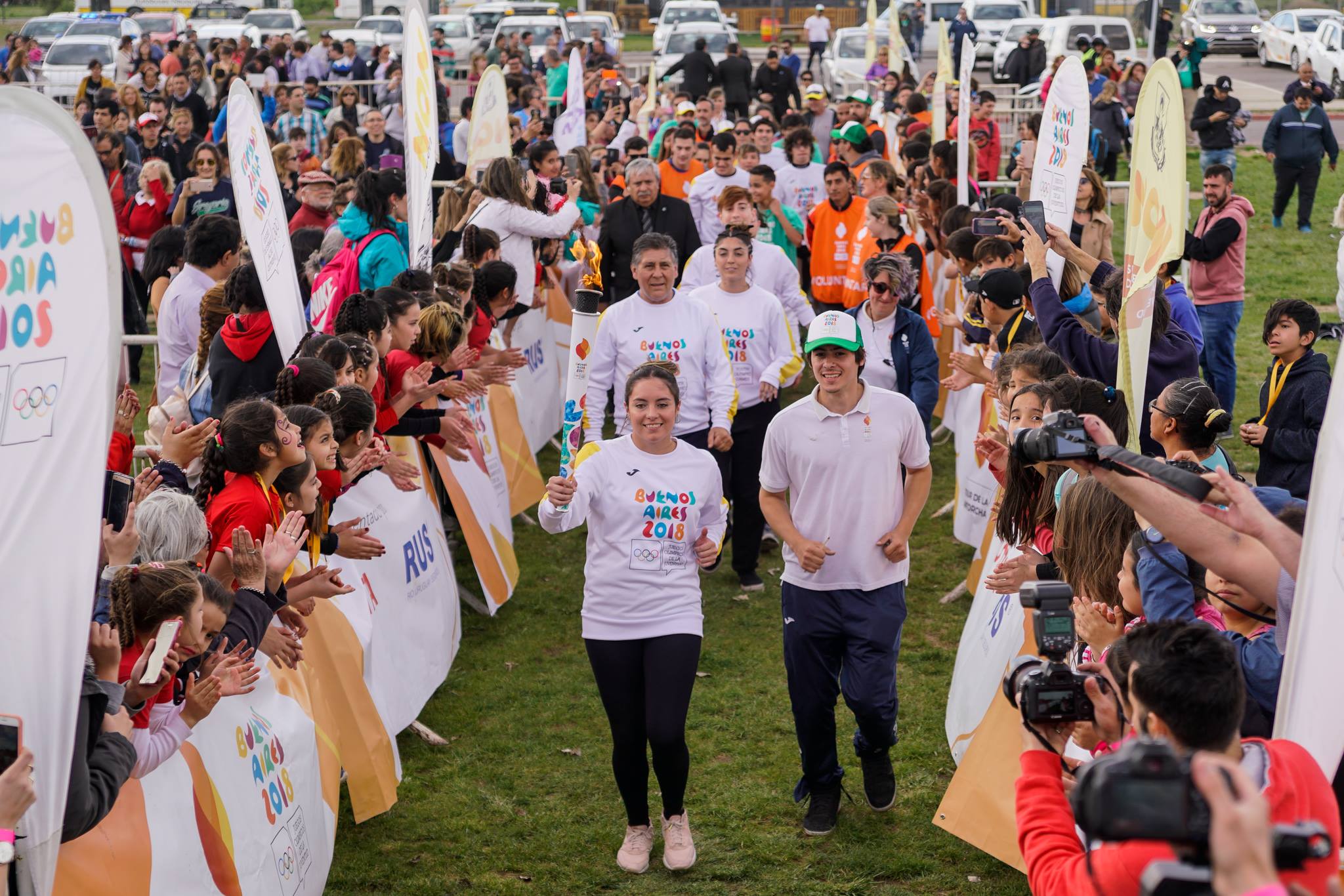

Transparent Loudspeakers And MICs That Let Your Skin Play Music
September 18, 2018: Ulsan National Institute of Science and Technology(UNIST)An international team of researchers, affiliated with UNIST has presented an innovative wearable technology that will turn your skin into a loudspeaker.
This breakthrough has been led by Professor Hyunhyub Ko in the School of Energy and Chemical Engineering at UNIST. Created in part to help the hearing and speech impaired, the new technology can be further explored for various potential applications, such as wearable IoT sensors and conformal health care devices.
In the study, the research team has developed ultrathin, transparent, and conductive hybrid nanomembranes with nanoscale thickness, consisting of an orthogonal silver nanowire array embedded in a polymer matrix. They, then, demonstrated their nanomembrane by making it into a loudspeaker that can be attached to almost anything to produce sounds. The researchers also introduced a similar device, acting as a microphone, which can be connected to smartphones and computers to unlock voice-activated security systems.
Nanomembranes (NMs) are molcularly thin seperation layers with nanoscale thickness. Polymer NMs have attracted considerable attention owing to their outstanding advantages, such as extreme flexibility, ultralight weight, and excellent adhesibility in that they can be attached directly to almost any surface. However, they tear easily and exhibit no electrical conductivity.
The research team has solved such issues by embedding a silver nanowire network within a polymer-based nanomembrane. This has enabled the demonstration of skin-attachable and imperceptible loudspeaker and microphone.
"Our ultrathin, transparent, and conductive hybrid NMs facilitate conformal contact with curvilinear and dynamic surfaces without any cracking or rupture," says Saewon Kang in the doctroral program of Energy and Chemical Engineering at UNIST, the first author of the study.
He adds, "These layers are capable of detecting sounds and vocal vibrations produced by the triboelectric voltage signals corresponding to sounds, which could be further explored for various potential applications, such as sound input/output devices."
Using the hybrid NMs, the research team fabricated skin-attachable NM loudspeakers and microphones, which would be unobtrusive in appearance because of their excellent transparency and conformal contact capability. These wearable speakers and microphones are paper-thin, yet still capable of conducting sound signals.
"The biggest breakthrough of our research is the development of ultrathin, transparent, and conductive hybrid nanomembranes with nanoscale thickness, less than 100 nanometers," says Professor Ko. "These outstanding optical, electrical, and mechanical properties of nanomembranes enable the demonstration of skin-attachable and imperceptible loudspeaker and microphone."
The skin-attachable NM loudspeakers work by emitting thermoacoustic sound by the temperature-induced oscillation of the surrounding air. The periodic Joule heating that occurs when an electric current passes through a conductor and produces heat leads to these temperature oscillations. It has attracted considerable attention for being a stretchable, transparent, and skin-attachable loudspeaker.
Wearable microphones are sensors, attached to a speaker's neck to even sense the vibration of the vocal folds. This sensor operates by converting the frictional force generated by the oscillation of the transparent conductive nanofiber into electric energy. For the operation of the microphone, the hybrid nanomembrane is inserted between elastic films with tiny patterns to precisely detect the sound and the vibration of the vocal cords based on a triboelectric voltage that results from the contact with the elastic films.
"For the commercial applications, the mechanical durability of nanomebranes and the performance of loudspeaker and microphone should be improved further," says Professor Ko.
Saewon Kang, Seungse Cho, Ravi Shanker, Hochan Lee, Jonghwa Park, Doo-Seung Um, Youngoh Lee, Hyunhyub Ko. Transparent and conductive nanomembranes with orthogonal silver nanowire arrays for skin-attachable loudspeakers and microphones. Science Advances, 2018; 4 (8): eaas8772 DOI: 10.1126/sciadv.aas8772
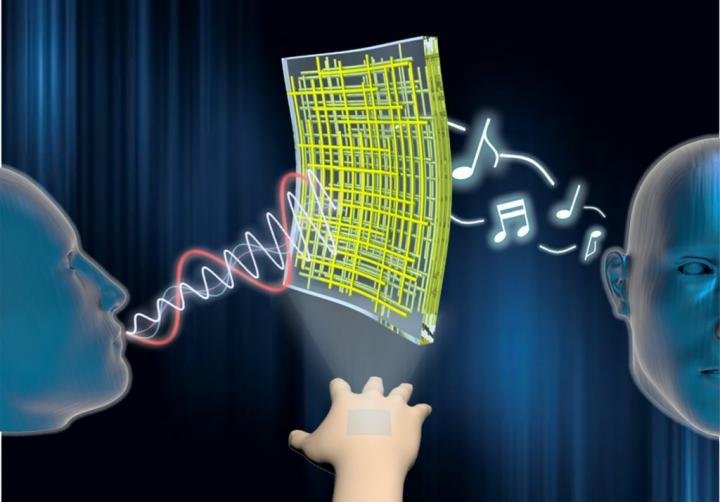
Their ultrathin, conductive, and transparent hybrid NMs can be applied to the fabrication of skin-attachable NM loudspeakers and voice-recognition microphones, which would be unobtrusive in appearance due to their excellent transparency and conformal contact capability.Credit: UNIST

International Study Suggest Ancient Globalisation
September 18, 2018: University of Central FloridaUsing energy consumption as a measure, a team of international scientists has found that ancient civilisations engaged in globalization more than previously believed, suggesting that an integrated global economy is nothing new and may have benefited societies for ages.
This archaeological research is the first of its kind, because instead of focusing on specific regions or cultures, it used radiocarbon dating to examine human societies on a broader and longer-term scale.
The findings are the result of a study co-authored by Jacopo A. Baggio, an assistant professor in the University of Central Florida political science department, and published today in the journal Proceedings of the National Academy of Sciences.
The research team included lead author Jacob Freeman, an assistant professor of archaeology at Utah State University, and Erick Robinson, a postdoctoral assistant research scientist in the Department of Anthropology at the University of Wyoming
The researchers found that societies often experienced booms and busts simultaneously, a process known as synchrony.
They used radiocarbon dating and historical records to measure energy consumption through a period of history ranging from about 10,000 to 400 years ago, a time frame that encompasses a large portion of the current Holocene era.
The greater the energy consumption, the more likely a society was booming with population and political and economic activity.
Some of the areas examined included the western United States the British Isles, Australia and northern Chile.
The radiocarbon dates came from preserved organic items such as seeds, animal bones and burned wood from ancient trash deposits at these sites. Radiocarbon dating measures the radioactive decay of the atom carbon-14 from organic matter to find the organic matter's age.
The researchers' findings suggest that early globalization was possibly a strategy for societies to grow through migration, trade and conflict with other, distant societies when a society's carrying capacity began to be overloaded.
Baggio, who is also a member of UCF's National Center for Integrated Coastal Research and the Sustainable Coastal System research cluster, said it is especially important to study societies' resilience, or ability to recover from a disaster, over the long term, and radiocarbon dating is a useful tool for this assessment.
"Resilience is intrinsically dynamic," Baggio said. "So, it becomes very hard to understand resilience in a short time span. Here we have the opportunity to look at these longer trends and really see how society has reacted and adapted and what were the booms and busts of these societies. Hopefully this can teach some lessons to be learned for modern day society."
The researcher said the rise and fall of societies seems to be an inherent part of civilization.
"Our data stop at 400 years ago, and there has been a huge change from organic economies to fossil fuel economies," Baggio said. "However, similar synchronization trends continue today even more given the interdependencies of our societies."
Freeman said the new study suggests the process of societies creating connections and becoming interdependent, known as globalization, also played out among human society millennia ago.
"If every culture was unique, you would expect to see no synchrony, or harmony, across human records of energy consumption," Freeman said.
Robinson said it is important to look at not only cultures at specific times, but also over the long term.
"We must move back and forth between different spatial and temporal scales in order to understand the whole picture," Robinson said.
"When we take a broader perspective, we are still interdependent on others, no matter our cultural differences,"
Although interconnectedness has advantages for societies, there can be downfalls as well, Robinson said.
"The more tightly connected and interdependent we become, the more vulnerable we are to a major social or ecological crisis in another country spreading to our country," he said. 'The more we are synced, the more we put all our eggs in one basket, the less adaptive to unforeseen changes we become."
"The financial crisis of 2007 to 2008 is a good recent example," Robinson said.
Jacob Freeman, Jacopo A. Baggio, Erick Robinson, David A. Byers, Eugenia Gayo, Judson Byrd Finley, Jack A. Meyer, Robert L. Kelly, John M. Anderies. Synchronization of energy consumption by human societies throughout the Holocene.Proceedings of the National Academy of Sciences, 2018; 201802859 DOI: 10.1073/pnas.1802859115
How Heartfelt Guilt Affects Individuals
September 19, 2018For thousands of years, people have closely associated moral cleanliness with acts of physical cleanliness. A recent study published in the Australian Journal of Psychology explored this association by eliciting guilt, a threat to one's moral purity.
In the study, guilt was elicited by asking participants to remember personal actions that resulted in harm to others and that had yet to be repaired. Participants were then shown threat words intermixed with negative, positive, and neutral words followed by a surprise recall test. Participants were also asked to select a parting gift from several products or rate the desirability of such products. These included cleansing items (hand sanitizer and mouthwash) and merchandise neutral to the concept of cleansing (pencil and notepad).
Heartfelt guilt led to elevated arousal, enhanced memory of threat words, and biased preferences towards cleansing products.
"Guilt is a complex experience involving at least two chronologically ordered components: the experience of a threat to moral purity, which is likely to make people think of dangers, and one's defensive response to the threat, which is likely to activate the desire to cleanse," said co-author Dr. Maura A. E. Pilotti, of Prince Mohammad Bin Fahd University, in Saudi Arabia.
Maura A. E. Pilotti, Khadija F. El Alaoui. A study of memory, evaluation, and choice with an (un)clean conscience.Australian Journal of Psychology, 2018; DOI: 10.1111/ajpy.12223Five Star Safety In A second Hand Car
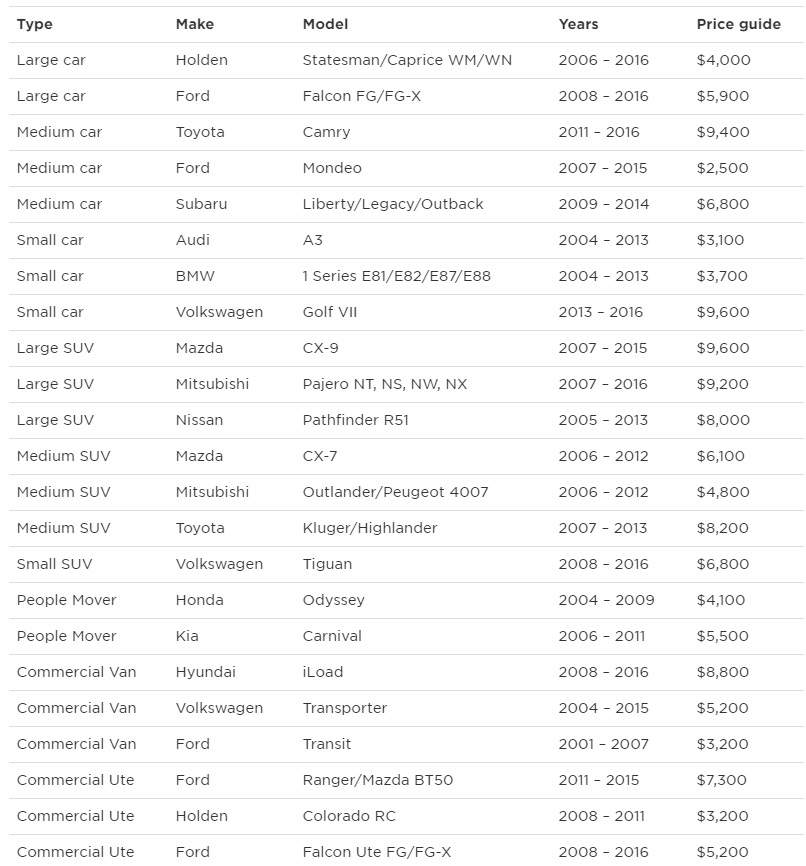
Young Northern NSW Egg Producer Wins RAS Foundation-Backed Nuffield Australia Farming Scholarship
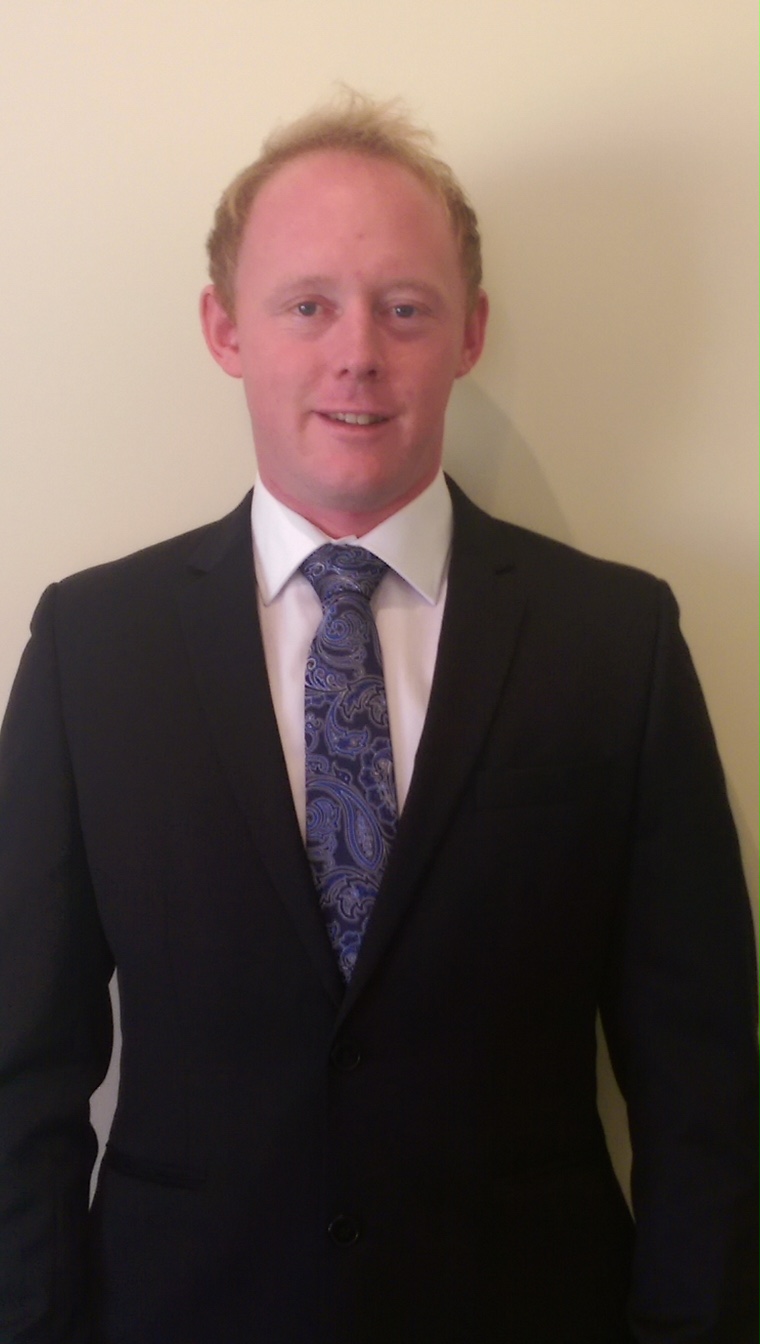
Effective Airport Regulation Needed
Quantum Anomaly: Breaking A Classical Symmetry With Ultracold Atoms
